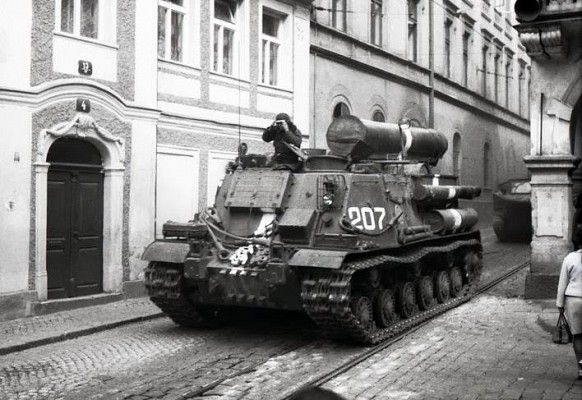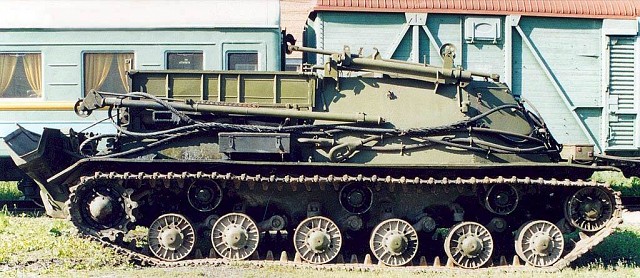BTT-1
Overview

BTT-1
Forward view of BTT-1 armored recovery vehicle.
Source: www.ost-front.ru -
© copyright lies with original owner
Russian for "armored heavy tractor 1"
ИСУ-Т (ISU-T in cyrillic)
БТТ-1 (BTT-1 in cyrillic)
Description
Introduction
The BTT-1 is an early Cold War era armored recovery vehicle of Soviet origin. The BTT-1 is one of the first dedicated armored recovery vehicle designs from the Soviet Union. All vehicles were conversions of obsolete WW2 era assault guns, none were produced new. Nowadays the BTT-1 itself is considered obsolete.
Layout
All BTT-1 were conversions of existing ISU-122 assault guns. Some ISU-122S and ISU-152 may have been converted as well. The gun is removed and the front hull is closed by a large steel plate. A winch is fitted in the superstructure facing rearwards. A flatbed area on the engine deck is used to carry various kinds of engineering equipment. Some vehicles were fitted with a large a-frame crane that folds forwards.
Recovery capabilities
The ISU-T was the earliest model and is nothing more than a heavy tractor. The BTT-1 features a heavy winch. An earth anchor at the rear is lowered before the winch is used. A small 3 t crane Subsequent improvements are a generator and some vehicle were fitted with a large A-frame.
Protection
The steel armor provides a good level of protection for the crew when on the move. The steel armor is up to 90 mm thick. During recovery activities the crew is exposed. NBC protection and smoke grenade launchers are absent.
Mobility
The BTT-1 features a new 520 hp V-52K diesel engine instead of the original engine of the ISU-122. The tracked chassis provides good cross country mobility. Its maximum speed is rather limited at 40 km/h on roads.
Users
The BTT-1 and its variants were mainly used by the USSR. A number were exported alongside the ISU-152 to Egypt and were used in the 1967 and 1973 conflicts with Israel. Small numbers were used by Poland and Czechoslovakia. It is believed that some BTT-1 saw active service up to the 1980's. Nowadays none remain in service.
Variants

BTT-1
Right side view of BTT-1 armored recovery vehicle.
Source: www.valka.cz -
© copyright lies with original owner